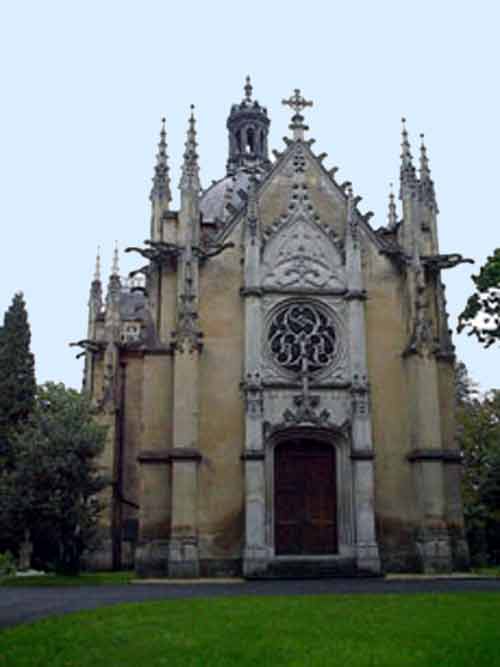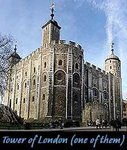 Farnborough is the birthplace of British aviation. Every two years the airfield hosts a major air display. As you drive in from the north, you pass a full size replica of Britain’s first jet aircraft, the Whittle of 1941.It is proudly mounted in flying pose at the entrance to the airfield or “aerodrome” as some road signs quaintly describe it. See http://www.frankwhittle.co.uk/content.php?act=viewDoc&docId=9&level=top.
Farnborough is the birthplace of British aviation. Every two years the airfield hosts a major air display. As you drive in from the north, you pass a full size replica of Britain’s first jet aircraft, the Whittle of 1941.It is proudly mounted in flying pose at the entrance to the airfield or “aerodrome” as some road signs quaintly describe it. See http://www.frankwhittle.co.uk/content.php?act=viewDoc&docId=9&level=top.The town centre is an unremarkable assembly of malls and car parks, with clones of every major British bank, clothes shop, coffee bar, fast food provider and mobile phone retailer. The only thing to distinguish Costa Coffee here from the same outlet in hundreds of British malls and high streets is the replica World War 1 biplane suspended above your head as you consume your cappuccino.
But walk for a few minutes from the shopping malls and you enter a parallel universe. Take your life in your hands, cross the A325 road, pass through a pair of electric gates next to a unappealing apartment block and climb the hill beyond. In less than 200 yards you find yourself in front of a monastery with a very French domed church alongside it. All French features present and correct: 9 foot gargoyles, marble floors, extraordinary glass in the side windows, three members of the Bonaparte family resident in the crypt.
Yes, Emperor Napoleon 3rd, the nephew of Napoleon Bonaparte (the loser of the 1815 Battle of Waterloo), is buried here. Alongside Napoleon 3rd there is his wife the Empress Eugenie and their only child, Prince Louis who died tragically at the age of 23 in 1879. This marked the end of any realistic hopes of a Bonaparte restoration in Fra
 nce at a later date. Many Frenchmen had regarded the young Prince Louis as the Emperor in exile. For better or worse, their beloved France would henceforth be a secular democracy and their bodies would lie in permanent exile in a foreign land. “Buried” is not strictly the right word; entombed is more correct, as their corpses are housed above ground in three splendid sarcophagi made of Aberdeen granite. These tombs are allegedly similar to those used in the British Royal family’s private burial site at Frogmore. The Abbey website ( http://www.farnboroughabbey.org/) explains:
nce at a later date. Many Frenchmen had regarded the young Prince Louis as the Emperor in exile. For better or worse, their beloved France would henceforth be a secular democracy and their bodies would lie in permanent exile in a foreign land. “Buried” is not strictly the right word; entombed is more correct, as their corpses are housed above ground in three splendid sarcophagi made of Aberdeen granite. These tombs are allegedly similar to those used in the British Royal family’s private burial site at Frogmore. The Abbey website ( http://www.farnboroughabbey.org/) explains:In 1880, the Empress Eugénie bought a house in Farnborough. Crushed by the loss of her husband Napoleon III in 1873 and the death in 1879 of her 23 year old son in the Zulu War, she built St Michael’s Abbey as a monastery and the Imperial Mausoleum.
Dom Cabrol, the prior of the French Abbey of Saint Pierre de Solesmes, had dreamed of a monastic foundation dedicated to liturgical studies, but no suitable property or funding had been found, though the vicissitudes of the anti-clerical France of the 1890s made the thought of a house abroad increasingly attractive. The Empress Eugénie invited these French Benedictines here in 1895 and thus the daily round of work, prayer and study began.
Monsignor Ronald Knox, who was received into the Catholic Church here, described the Abbey as ‘a little corner of England which is forever France, irreclaimably French.’ In 1947 a little band of monks came from Prinknash Abbey, near Gloucester, to anglicise the house and ensure the continuity of the monastic life here. The last French monk, Dom Zerr, died in 1956.
 The community today draws on the richness of more than a hundred years of monastic prayer and witness in this place and more than 1500 years of Benedictine tradition. “
The community today draws on the richness of more than a hundred years of monastic prayer and witness in this place and more than 1500 years of Benedictine tradition. “Farnborough Abbey is a Benedictine foundation, but these are a very distinct type of Benedictine. In contrast to the Benedictine monastery at Douai, twenty miles west of Reading, the Farnborough Benedictines are a contemplative community. Douai is open all the time; you can casually drop into the splendid church at any time of the day and join the monks at one of their regular Offices. Farnborough is open once a week at 300pm on a Saturday for a guided tour, but otherwise the monks preserve their privacy and seclusion two hundred yards from the bustle of 21st century England. At present there are 7 monks ranging in age from 23 to 96. The oldest member can recall the early, totally French days when any Englishman was a highly suspect intruder. There is typically a new novice every year, but there is a steady turnover; the majority do not persevere. Seven monks sounds very few, but it is enough to maintain a vibrant spiritual and working community. The monastery was never intended to be large, unlike some of the huge European houses which accommodate 200 or 300 monks. The most that could reasonably be housed at Farnborough is 14.
The electric gates beside the apartment block are mostly kept shut to preserve the sense of enclosure for the monks. If you want to get in, ring the bell, speak into the intercom, and give a good reason for intruding on their prayers and work. They aim to conserve St Benedict’s ideal life balance of prayer, manual work and study. They run a small farm with a mixture of cows, chickens and bees. But the work for which they are best known is book publishing and binding. Also the monastery now houses the National Catholic Library. I visited this library many years ago when it was housed near Westminster Cathedral in London. For years the Franciscans maintained this incredible resource, but had to give it up. It was threatened with dissolution and dispersal until the monks offered it a new home. So, between the NCL and their own library, they now have 125,000 books on site for 7 monks.
What a place to visit and how much politicking, sadness, humour and history is packed into these few acres. Napoleon 3rd died in exile 3 years after the catastrophic French defeat in the Franco-Prussian war of 1870-71. When the war started, the cry in Paris was “A Berlin!”. Unfortunately the Prussians crushed the French Army and surrounded Paris. When Napoleon died in 1873, he was buried at St Mary’s Church, Chislehurst, south-east of London. There were various ideas for a suitably dignified memorial/mausoleum in that area, but none came to pass. The Catholic Church in Chislehurst was the property of the diocese. Land near the church belonged to a Prussian who had served in the 1870 war and was none too eager to sell any part of his land to accommodate the redundant Emperor.
Eventually his widow Eugenie had the opportunity to buy Farnborough Hill, a grand house built in a somewhat Continental style and sited in a huge estate. She hired an eminent French architect to extend it to accommodate her huge collection of Napoleonic memorabilia. It is now a Catholic girls’ school (see http://www.farnborough-hill.org.uk/ for a glimpse of this Grade 1 listed building). She arranged for the present monastery and church/Imperial Mausoleum to be built on a neighboring hill. Then she invited the monks. Part of the appeal for the monks was the fact that Farnborough had two railway stations. From one station you could reach Oxford and its Bodleian Library in a hour. From the other station you could reach London and its huge range of libraries in an hour. This was very attractive to the scholarly Benedictines.
When Napoleon’s coffin was finally moved from Chislehurst to Farnborough, history had one big joke to play. His remains were transported by rail…via the huge Waterloo station in south London. (See “The Bourne Ultimatum” for the memorable chase across this crowded terminus). Eugenie lived until 1920, though she said that she died in 1879 with her only child.
French politics is as heavily burdened by the past as that of any other nation. Napoleon Bonaparte is buried in great style in Paris. Having visited his tomb in 2006, I could only regard it as a monstrous waste of a glorious church. Yet his nephew remains in British exile, long after the cause for his staying abroad has faded away. Every so often there is a move to try to repatriate him, but so far the monks and the Bonapart family in France remain united in wishing him to stay in Farnborough.
His life continues to be celebrated quietly in unexpected ways. 2008 was the 200th anniversary of his birth and several diplomats from France and other countries turned up at Farnborough to pay homage. Most amazing of all was the Romanian ambassador. What on earth was he doing here? Well, Napoleon 3rd had helped to save Romania from being colonized by the Ottoman Empire and they were still grateful. The Swiss wanted him to be buried on Swiss soil, as the Bonapart family at one time spent a long exile in Switzerland. So a packet of Swiss soil is tucked underneath his sarcophagus.
I was reminded of my visit to Peterborough Cathedral a few years ago. Every year there is a service at the tomb of Katherine of Aragon, Henry 8th’s first and ever-faithful wife. As she was Spanish royalty, the Spanish Embassy in London always sends a representative.
The week before my visit was the 130th anniversary of Prince Louis’ death. His sarcophagus had at its base several wreaths with French inscriptions. Who will bother to remember any of our statesmen or celebrities in 130 or 200 years time? In most cases, we fervently wish that we could not remember them today.

